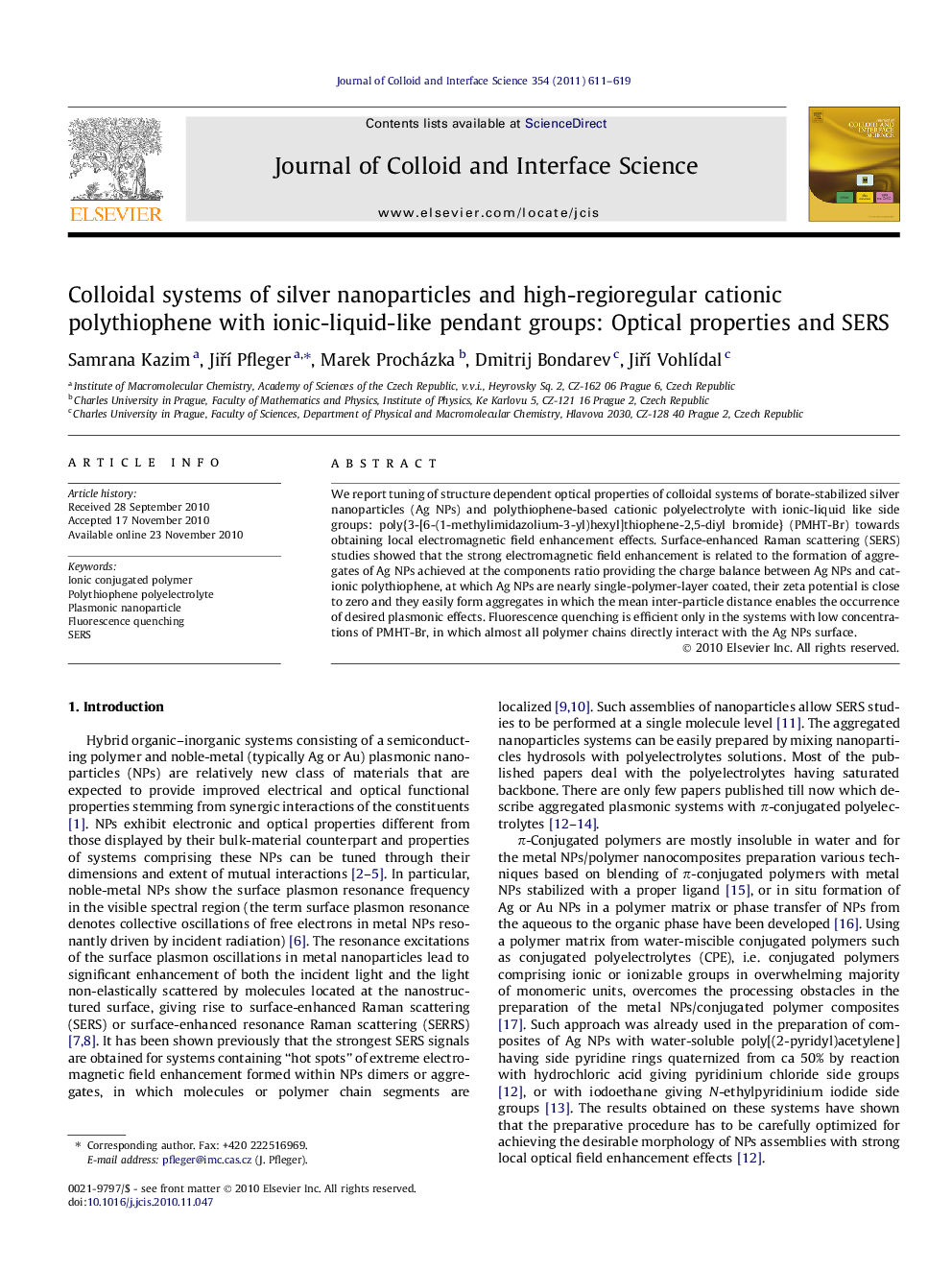| Article ID | Journal | Published Year | Pages | File Type |
|---|---|---|---|---|
| 608923 | Journal of Colloid and Interface Science | 2011 | 9 Pages |
We report tuning of structure dependent optical properties of colloidal systems of borate-stabilized silver nanoparticles (Ag NPs) and polythiophene-based cationic polyelectrolyte with ionic-liquid like side groups: poly{3-[6-(1-methylimidazolium-3-yl)hexyl]thiophene-2,5-diyl bromide} (PMHT-Br) towards obtaining local electromagnetic field enhancement effects. Surface-enhanced Raman scattering (SERS) studies showed that the strong electromagnetic field enhancement is related to the formation of aggregates of Ag NPs achieved at the components ratio providing the charge balance between Ag NPs and cationic polythiophene, at which Ag NPs are nearly single-polymer-layer coated, their zeta potential is close to zero and they easily form aggregates in which the mean inter-particle distance enables the occurrence of desired plasmonic effects. Fluorescence quenching is efficient only in the systems with low concentrations of PMHT-Br, in which almost all polymer chains directly interact with the Ag NPs surface.
Graphical abstractNew water-soluble regioregular cationic polythiophene was prepared and used for aggregation of silver nanoparticles into assemblies with localized surface plasmon effects.Figure optionsDownload full-size imageDownload high-quality image (131 K)Download as PowerPoint slideResearch highlights► Aggregation of plasmonic silver nanoparticles by adsorption of cationic polythiophene due to electrostatic interactions. ► The aggregation is controlled to provide “hot spots” with strong electromagnetic field enhancement. ► Presence of “hot spots” was evidenced by SERS measurements. ► Nanoparticles quench fluorescence efficiently only at low polymer concentrations.
